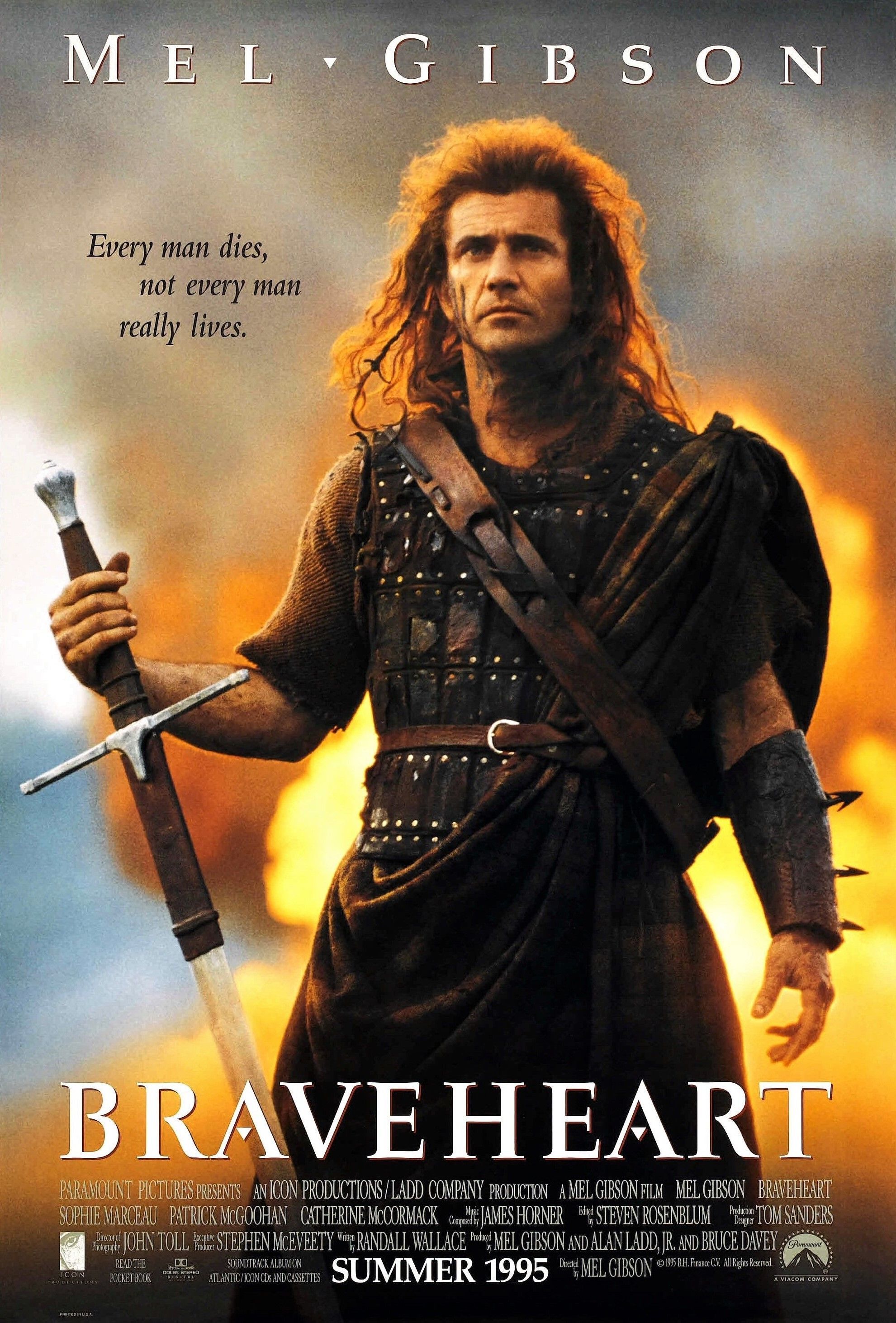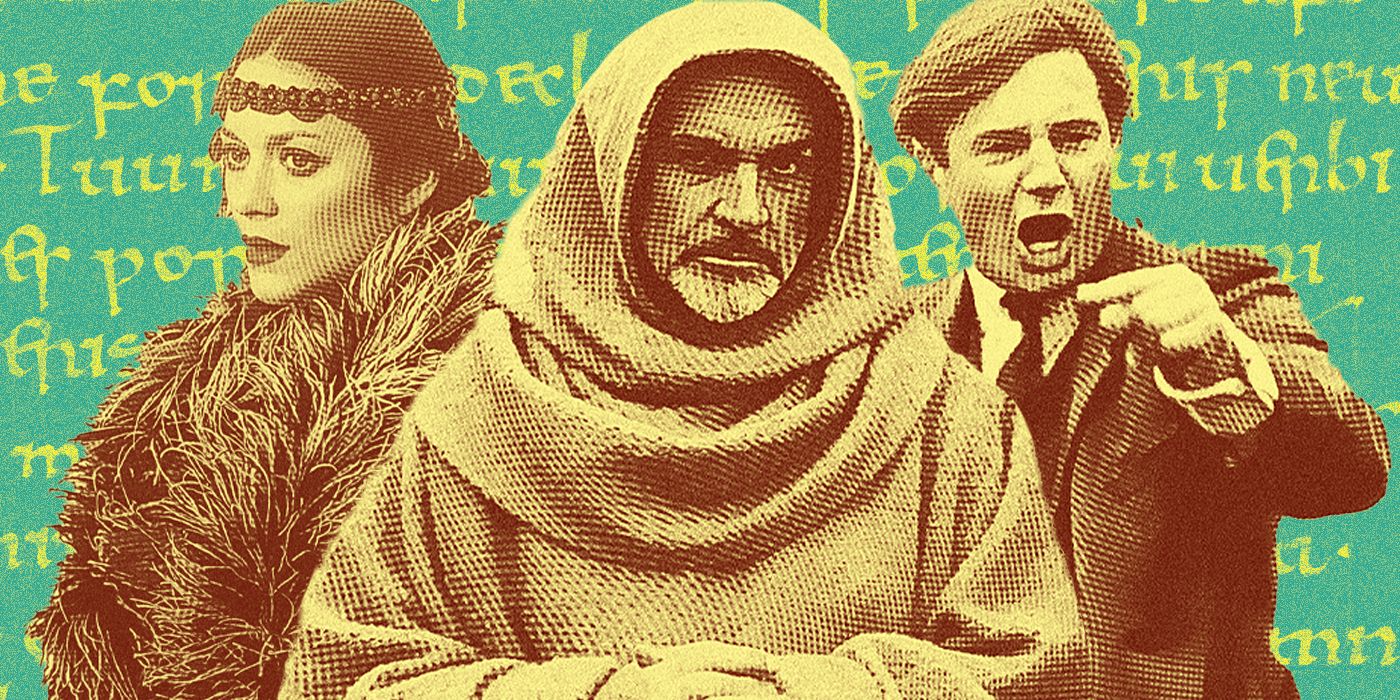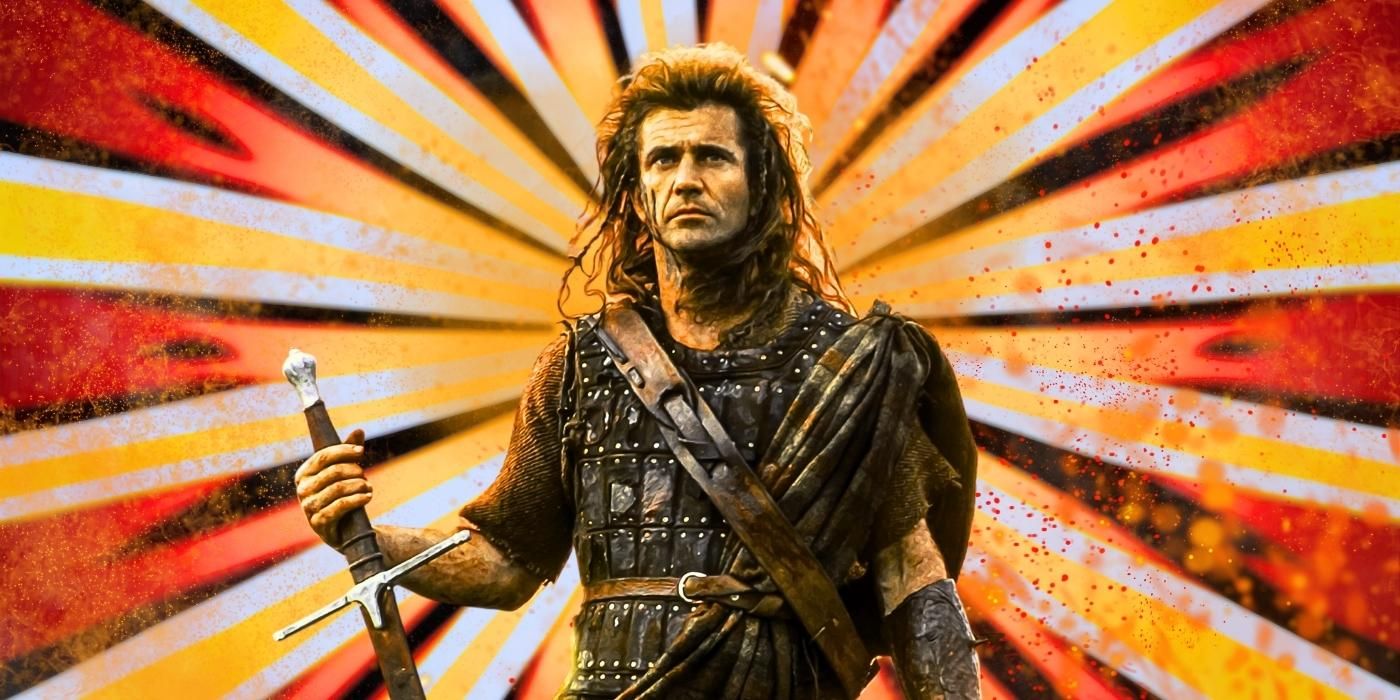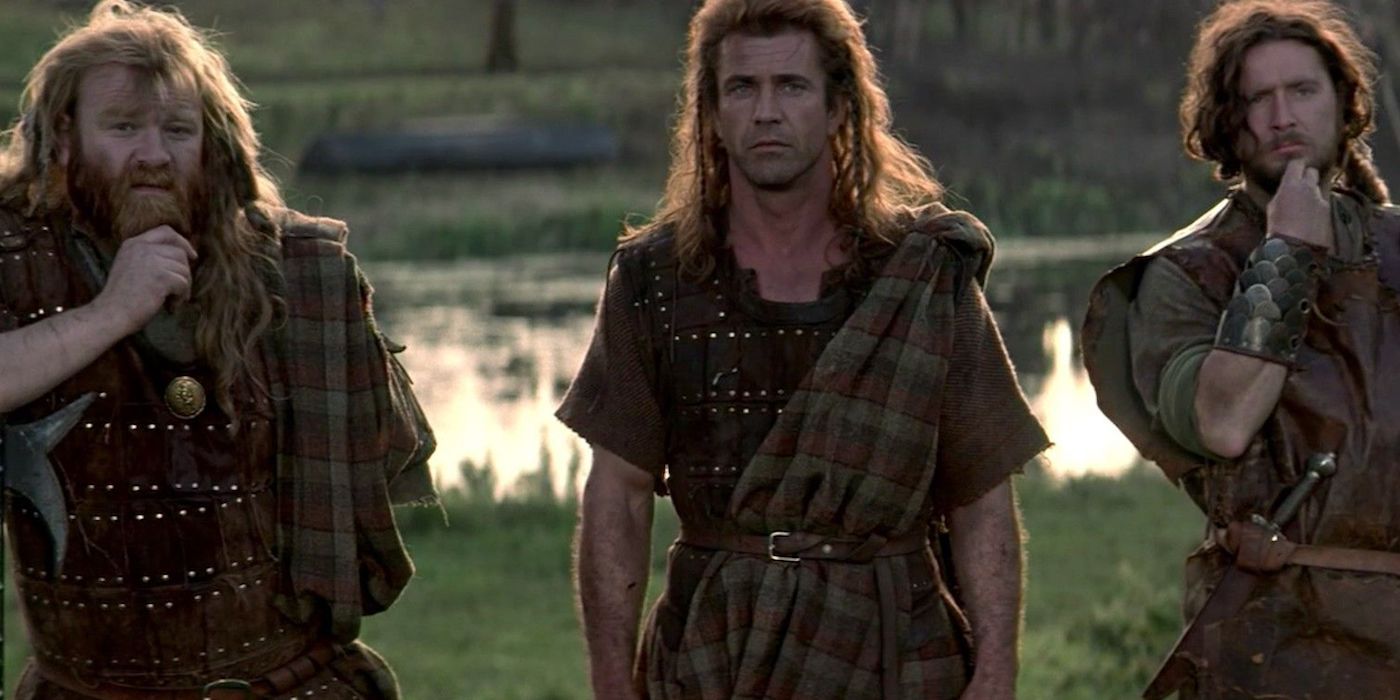The Big Picture
- Braveheart's portrayal of Scots and the English is rife with stereotypes and inaccuracies.
- The film is full of misogyny, with the mistreatment and misrepresentation of female characters.
- The battles depicted in Braveheart are not entirely accurate and take liberties with historical events.
Braveheart is a master lesson in bollocks filmmaking, a movie full of bs from beginning to end. At first glance, the 1996 Academy Awards' Best Picture winner is a sweeping historical epic, a tale rife with action and drama. Mel Gibson's William Wallace is strong and stirring — a master tactician, warrior, and, lest we forget, lover. But is it factual? Nae, lassie.
There's more truth to be had surrounding Nessie. Braveheart hits enough beats to keep its status as a biographical account of the Scottish national hero, yet when you look deeper there are timeline discrepancies, costuming discrepancies, event discrepancies, misogyny, character assassinations, and a hint of racism. To be fair, it could be argued that a biopic doesn't need to be married to the truth, but Braveheart could have skewed a little closer. Here's a fun fact: "Braveheart" was a name attributed to King Robert the Bruce, not Wallace. The film doesn't even attribute the nickname to the right guy. How hard could that have been? So even before going into the film, there is something amiss. Here's the reality.

Braveheart
Scottish warrior William Wallace leads his countrymen in a rebellion to free his homeland from the tyranny of King Edward I of England.
- Release Date
- May 24, 1995
- Director
- Mel Gibson
- Cast
- Mel Gibson , Sophie Marceau , Patrick McGoohan , Angus Macfadyen , james robinson , Sean Lawlor , Sandy Nelson , James Cosmo
- Runtime
- 178 Minutes
- Main Genre
- Biography
'Braveheart' Deals in Stereotypes
When one pictures a Scot, the image typically depicted is one of a working-class, kilt-wearing ruffian playing bagpipes. If that were indeed true, then Braveheart has arguably the most realistic portrayal of Scots on film. Only it's not. A young Wallace and his family, in the film, are poor farmers living in a Highland glen. In actuality, Wallace was born in the Southwest of Scotland, the son of a minor nobleman. The kilts and belted plaid in the film weren't worn by the Scots until the late 16th century, problematic for a film set in the 13th century (for that matter, English soldiers wouldn't have had matching royal uniforms).
While the Scottish are made out as manly men, the English are portrayed as much weaker and more feminine overall. The harshest stereotype, however, is given to Edward II (Peter Hanly). Edward II is portrayed not only as homosexual but also as weak, impotent, and effeminate. There's no evidence that Edward II even was gay, nor is there any record that 1st Earl of Cornwall Piers Gaveston (named 'Phillip' in the film, played by Stephen Billington), who in the film as Edward's male lover, was pushed out a window to his death by King Edward I (Patrick McGoohan), although he was sent into exile by the monarch.
'Braveheart' Is Full of Misogyny
Women do not fare much better in the film. Wallace's wife Murron MacClannough (Catherine McCormack) is publicly executed in the film. That event did happen, and while it wasn't the catalyst of Wallace's vendetta against the English, it was the straw that broke the back. The indignity around the figure is that Murron wasn't even her name. Her real name was Marion Braidfute, changed for the film so as not to be confused with Robin Hood's Maid Marian. It's not only an insult to a historic figure, but to moviegoers as well. A key figure in the film is Isabella of France (Sophie Marceau), wife of Edward II who was sent to negotiate with Wallace. Instead, she secretly has a tryst with the freedom fighter, clearly unable to resist his charms. The thing is, Isabella would have been three years old at the time, and still in France. The historical account the film is based on does say a secret meeting occurred between Wallace and Edward I's young wife, Margaret of France, so the only reason to use Isabella is to set up the twist of her carrying Wallace's child, breaking the news to a dying King Edward I (who actually wouldn't die for another two years).

The 10 Most Underrated Historical Movies, Ranked
These underrated historical gems have been lost to time and need to be unearthed.The most damning misogynistic element of the film is "jus primae noctis" ("right of the first night"). It's something that King Edward I enforces early on in the film and allows English lords to take the virginity of newly married Scottish brides on the day of their wedding to breed the Scots out. There's no evidence that supports that the law ever existed, with medieval scholar Albrecht Classen stating "Practically all writers who make any such claims [of its existence] have never been able or willing to cite any trustworthy source, if they have any." It exists as an unnecessary plot device to kick-start Wallace into action, when the truth would have just as easily accomplished the same thing.
'Braveheart' and Its Bollocks Battles
The strength of Braveheart is in its depiction of the historic battles between the Scottish and the English, appropriately grand and bloody in equal parts. But, yet again, another aspect of the film that plays fast and loose with the facts. The image of Wallace prepared for battle with blue woad face paint and a long sword is a striking image, but the paint comes from the Ancient Celts and Picts, a good 1000 years prior, and the long sword would have been useless in a close fight without the space to swing it around. The Battle of Stirling Bridge is one of Wallace's most famous victories, and although it looks spectacular on film, there are two major inaccuracies.
The first was the complete absence of Scottish leader Andrew de Moray, who was leading an uprising in the northeast of Scotland before joining forces with Wallace. In fact, it was Moray who masterminded the brilliant tactical plan of the battle, a battle which would end in his death shortly afterward. The second is not even showing the brilliance of the plan the Scottish used. The Scots would wait for the right amount of English troops to cross the bridge and then attack, catching the English off-guard and throwing the army into disarray. Only there is no bridge in the film, a pretty important piece left out in a battle known for taking place on one. The Battle of Falkirk is actually one of the more accurate pieces in the film, although there was no Irish mutiny, nor did Robert the Bruce betray Wallace.
Wallace’s Death in ‘Braveheart’ Is Not Accurate & That’s a Good Thing
Charged with treason, Wallace was sentenced to be hanged, drawn, and quartered. The film doesn't seem to hold back in detailing the gruesome execution, but the truth is the real execution was far, far worse than what appears on-screen. Four different horses, one per limb, dragged Wallace for miles to his execution. He was hanged almost to the point of death, before being taken down and horrifically mutilated. While still breathing, his genitals were sliced off, his entrails pulled out, and his innards burned in front of him. It was only then Wallace was decapitated and dismembered. Wallace's head was placed on London Bridge, while the four quarters of his body were placed in Stirling, Aberdeen, Berwick, and Newcastle. Needless to say, it is very highly unlikely that Wallace was in any position to cry "Freedom", but at his so-called trial Wallace did state, "I can not be a traitor, for I owe him no allegiance. He is not my Sovereign; he never received my homage; and whilst life is in this persecuted body, he never shall receive it."
In fairness to Gibson, most of what is known about Sir William Wallace comes from Scottish author Blind Harry and his 1488 historical novel The Acts and Deeds of the Illustrious and Valiant Champion Sir William Wallace, Knight of Elderslie. The novel takes its cue from the events of the Scottish Wars of Independence and popular legends surrounding Wallace, portraying Wallace on an almost superhuman scale, meaning that the source material may be just as speculative as the film itself. Given the discrepancies between what is factual and what is in the film, though, there is more than enough to cast doubt on the Hollywoodization of Wallace.
Braveheart is available to stream on Amazon Prime Video in the U.S.


